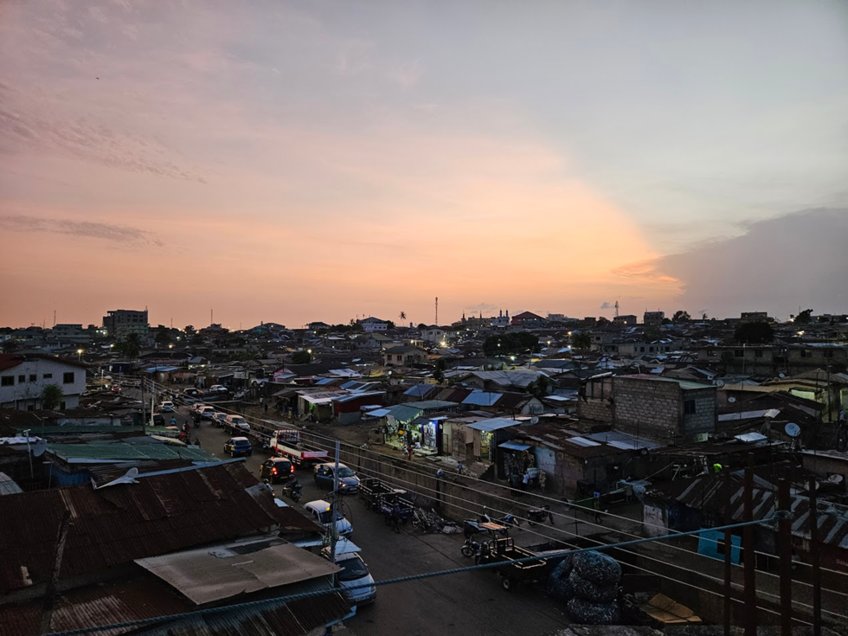In the era of superdiversity
Modern migration is more complex than ever
As societies around the globe become increasingly diverse, the dynamics of migration demand a more nuanced understanding. Superdiversity, a concept created by Steven Vertovec, encapsulates the complex interplay of factors surrounding contemporary human movement and its outcomes. Here, he considers how migration is a multifaceted phenomenon shaped by economic, social, political, demographic and environmental forces.

A contribution from Steven Vertovec
In today's interconnected world, migration is more complex than ever. Superdiversity reflects the profound diversification of processes, social and legal categories, and resultant societal configurations comprising contemporary global migration. Current human mobility patterns are complicated by an array of factors including political instability, insecurity, violence, economic opportunities, family reunification, educational aspirations, and increasingly, climate change. Understanding these multiple stimuli and their linkage is crucial as we navigate this new era of human movement.
Current Migration Statistics
The International Organization for Migration (IOM) reports that there are currently some 281 million international migrants, representing 3.6 percent of the global population and marked by a slight male majority (51.9 percent males to 49.4 percent females). This figure reflects a rebound after the COVID-19 pandemic, which temporarily stunted global movement. Internal migration has also dramatically increased over the last twenty years, with estimates suggesting that over 2 billion people now move within their own countries. The decision to migrate is often influenced by a combination of causes rather than any single one, highlighting the need for a comprehensive understanding of its drivers.
The Complex Nature of Migration

Migration is seldom a singular response to one factor. Rather, it involves a mix of multiple influences, including political instability, economic necessity, social factors, demographic pressures, and environmental changes. These influences interact in various ways, perpetually impelling and intensifying each other. For instance, political corruption and violence can exacerbate economic inequalities, which in turn may be worsened by environmental degradation. Migration decisions also involve considerations of temporality (when to move), geography (where to move), and selectivity (who moves).
Climate Change and Migration
The International Panel on Climate Change (IPCC) highlights that climate hazards associated with extreme events may act as direct drivers of involuntary migration and displacement, while migration may also arise indirectly through the deterioration of climate-sensitive livelihoods. These are not just significant concerns for possible climate change futures. Recent years have seen large-scale displacements triggered by climate- and weather-related disasters in many parts of the world, including the Sahel region of Africa, Pakistan, the Philippines, China, India, Bangladesh, Brazil, and Colombia.
Estimates of so-called "climate migrants" vary widely, with projections suggesting that by 2050, between 200 million and 1.4 billion people may need to relocate due to the climate crisis. Environmental changes, including sudden-onset disasters like floods and slow-onset events such as droughts and sea-level rise, exacerbate existing vulnerabilities. Between 2008 and 2021, nearly 350 million people were internally displaced due to rapid-onset environmental events, with around 6 million relocating permanently and some crossing international borders following natural disasters.
Challenges and Responses
Climate-related displacement represents a serious challenge for cities in the Global South. New and diverse influxes of people impact urban peripheries, often lacking adequate public services and infrastructure. Migrants moving from climate-affected areas to urban zones that also experience heatwaves, flooding, and drought, often face overstretched services, public health concerns, food insecurity, and lack of livelihoods. Research by Jamila Hamidu at the Max Planck Institute for the Study of Religious and Ethnic Diversity shows that climate-related migration is leading to a considerable diversification of migrant flows to places like Tamale in northern Ghana, where people are arriving from a vast assortment of ethnic, linguistic, religious, and socio-economic backgrounds from places throughout Mali, Niger, Burkina Faso, Togo, Senegal and as far afield as Pakistan and India.
To effectively manage these challenges in the near and longer-term future, proactive solutions are essential. Investment in climate-resilient infrastructure, early warning systems, and sustainable development is crucial. Regional cooperation and international support, including financial aid and technology transfer, can help cities in the Global South adapt to the influx and diversification of migrants.
The Role of Policy and Research
Research into superdiversity and migration must continue to explore the intricate relationships between migration drivers, decisions, mobility processes, socio-cultural and socio-economic diversifications, and their outcomes. Effective policy responses require a deep understanding of the interrelated complexities of migration and climate change. Policymakers must recognize that migration decisions are not binary but part of a broader set of strategies developed by households for adaptation under conditions of environmental transformation. This includes acknowledging the phenomenon of immobility, where people – particularly the most vulnerable – may be unable to move despite worsening conditions. These "trapped populations" also highlight the need for tailored interventions that consider local contexts, their socio-cultural, socio-economic economic and political dynamics.
Policymakers need to consider the timing and scale of interventions, recognizing the entangled factors and processes at play. Simplified policy approaches often seek quick fixes rather than appreciating the intricacies of contemporary and future developments. Greater acknowledgment and communication of these aspects are necessary for better public comprehension and more amenable policy-making.
Conclusion
The causes, processes, and consequences shaping migration and diversification futures remain inherently uncertain. The unpredictable manifestations of climate change and their impacts on migration decisions underscore the need for a comprehensive approach. Migration will continue to be an essential survival strategy worldwide, and acute labour shortages in developed nations will necessitate continual adjustments to migration policies and management. Ideally, these should take into consideration peoples affected by climate change to arrive at mutually beneficial arrangements. In an era of unprecedented global change, understanding and addressing the nature of migration and superdiversity is more important than ever. The intertwined factors driving human movement demand a holistic approach that goes beyond simplistic cause-and-effect models. By fostering a greater appreciation of these complexities, we can develop more flexible, inclusive, and sustainable policies to navigate the challenges and opportunities of modern migration.













